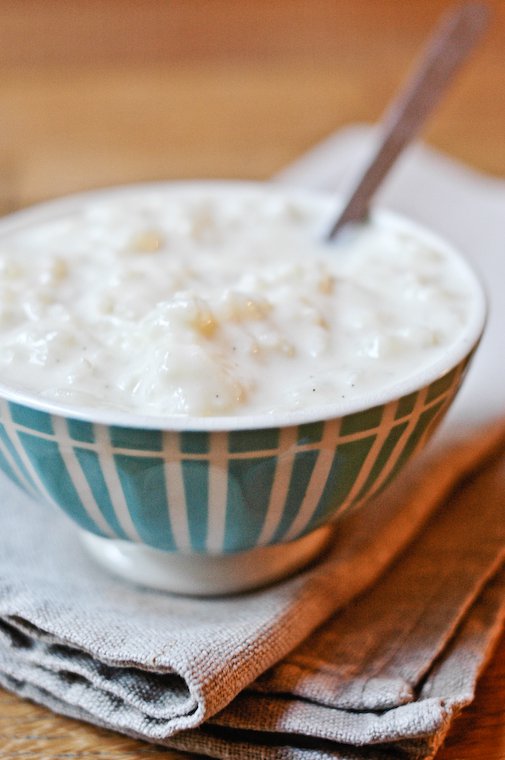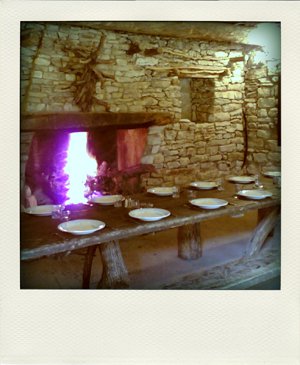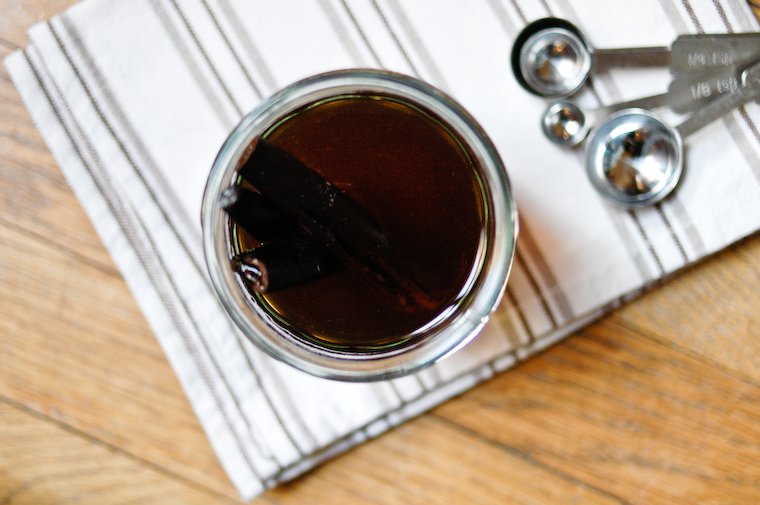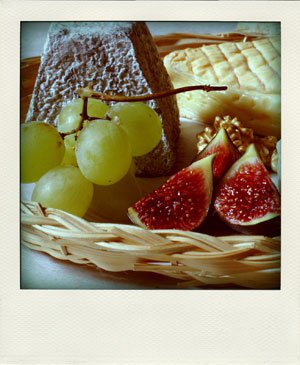As you might remember from my Best of 2008 list*, I have recently revived my old homemade yogurt routine, after several years of hiatus.
There was no tangible reason for this hiatus apart from my self-confessed flemme — a French word that is pronounced exactly like phlegm (sorry, but it is) and is a sentiment of laziness that washes over you when you can’t be bothered to do something — but there is a very real reason for ending it: when I realized the number of yogurt tubs I was tossing every week, I thought it more eco-friendly to use milk (in a recyclable carton) and glass jars instead.
This is the simple, classic recipe that purists love because it doesn’t muffle the flavors of the rice or milk.
The thing is, each batch of yogurt left me with a half-cup of milk** I didn’t know what to do with, because we don’t really do milk in my household. And that’s when I made this breakthrough discovery — cue in the cymbals, please — milk can be frozen! Who knew? And if someone knew, why didn’t he tell me?
The one caveat is that thawed milk seems to lose some of its structural integrity and looks a bit like it’s curdled, which might be a turnoff if you intend to drink it or add it to your cereal. But what one can do with thawed milk, regardless of this separation issue, is cook or bake with it.
And so, ever since the breakthrough discovery, I’ve been setting aside those half-cups of leftover milk in a dedicated container in the freezer***, and when there is enough, I use it to make béchamel or riz au lait [ree oh leh], the French rice pudding.
I will rush to add that I myself do not care for rice pudding, like, at all, but I will spare you the details of what the texture reminds me of, because I don’t want to ruin it for everybody else. The point is, Maxence loves it, and this version, drawn from Sonia Ezgulian’s too-lovely-for-words Petits Ricochets de cuisine (already mentioned here), is Maxence-approved.
As the name suggests, this is the simple, classic recipe that purists love because it doesn’t muffle the flavors of the rice or milk, but if you wish to doll it up, try:
– substituting coconut milk or almond milk for the cow’s milk,
– using other types of rice (adjust the cooking time accordingly) or alternate sweeteners (unrefined cane sugar, maple syrup, agave syrup, honey),
– serving it with caramel sauce or stewed black cherries,
– topping it with sliced mangoes, bananas, or the pulp of a passion fruit,
– blending in some raspberries and serving it with speculoos cookies,
– stirring in some nuts and/or dried fruits (sliced almonds, pistachios, chopped pecans, cranberries, cherries, diced figs or prunes),
– replacing (or adding to) the vanilla with citrus peel, cinnamon, and/or cardamom,
– blending the mixture (not too finely), and churning it in your ice cream machine.
~~~
* Seriously, I don’t really expect you to remember.
** My yogurt machine requires 875 ml (~3 1/2 cups) of milk (from a 1-liter / 1-quart carton) plus 125 ml (~1/2 cup) yogurt to produce eight 125-ml (~1/2-cup) yogurts.
*** Remember that, like any liquid that’s mostly water, milk expands as it freezes, so leave a little room at the top of the container/bottle so it won’t overflow. Plan to use the frozen milk within a month or so, and thaw in the refrigerator.
Continue reading »








